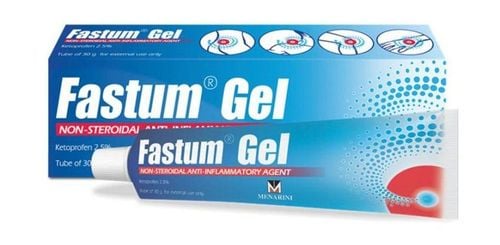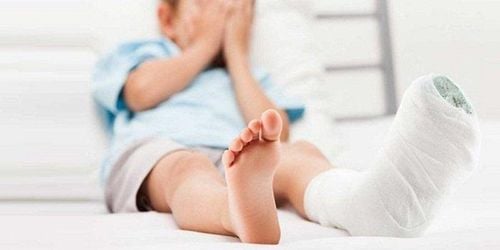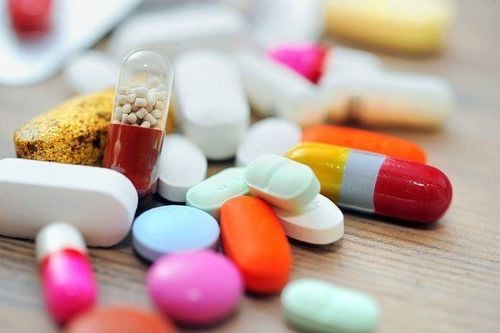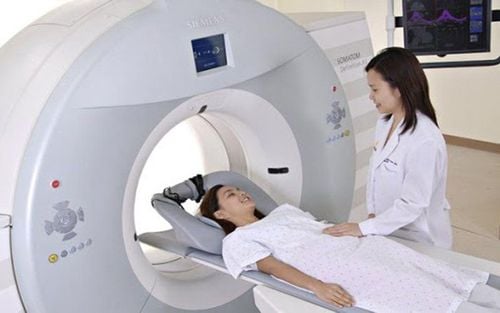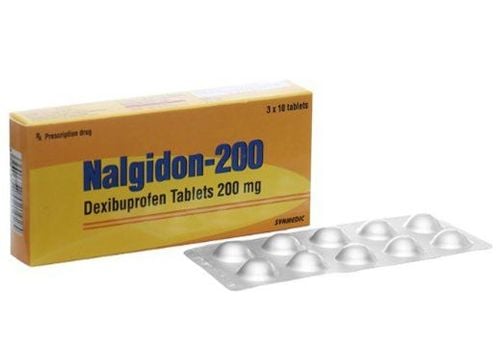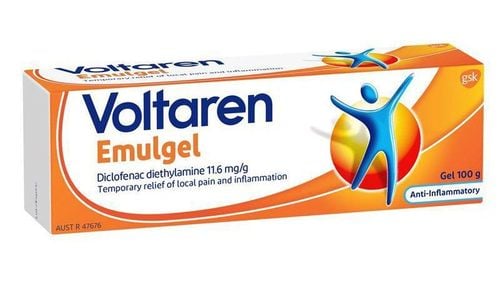This is an automatically translated article.
Children with a desire to explore, they are always running around, jumping and dragging objects. In some cases, overstretching leads to minor injuries. Over-stretching a child's muscles can cause muscle pain, while over-stretching the ligaments can lead to sprains. As a parent, it's important to be careful and get the wound treated right away. Some basic pain relievers and creams should be available in your home first aid kit.
Also, ligaments, which are strong elastic bands of tissue, hold bones together at joints. Sprains occur if these ligaments are overstretched or torn. Overstretching can cause mild pain, but if your child's ligaments are torn, he needs immediate medical help. So what is the difference between a sprain and strain in a child? This article will provide useful information to help caregivers get the right direction when faced with this situation.
1. What are sprains and strains in children?
Sprains are injuries that stretch, partially or completely break a ligament (the structure that connects bone to bone and plays a role in stabilizing a joint) leading to instability but not dislocation. Ankles, knees, and elbows are the most prone to sprains, especially when twisted hard.
However, because a child's ligaments are often stronger than the surrounding bone and cartilage, they are more likely to have an injury to the bone than to the ligament.
Muscle strain is a condition in which a muscle is overstretched or even torn. It is caused by fatigue, overuse or improper use of muscles. Any muscle can be pulled, but the muscles of the lower back, neck, shoulders, calves, and hamstrings are most common.
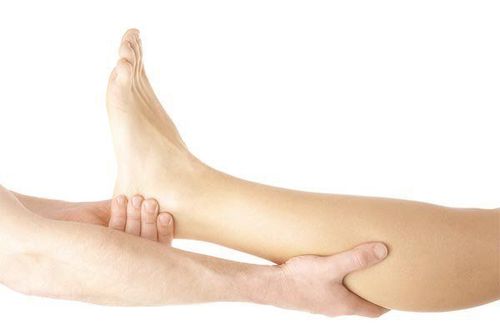
Tình trạng căng cơ có thể do sử dụng cơ bắp không đúng
2. Causes of muscle strain, sprain
A sudden strain, twist or tear of a ligament causes a sprain. This injury can happen when a child falls or is bumped into the body. Sprains usually affect the ankle, knee, or wrist.
Muscle tension can happen suddenly, such as when a child contracts too much. Or it can happen over time if a child overuses a muscle or tendon. This overuse can occur during activities that require the same movements to be repeated over and over.
3. Symptoms of sprains and strains
Symptoms that occur may vary from child to child. Symptoms of a sprain or strain often depend on the severity of the injury. Here are the most common symptoms your child may feel in the injured area:
Pain: A sprain or strain is more likely to cause immediate pain. A mild muscle strain may not be painful until several hours after the injury occurs. Swelling: A sprain will cause more local swelling than a simple strain, but severe strain can still lead to swelling. Bruising or redness: Both lesions have the potential to cause bruising if a blood vessel ruptures. Difficulty moving or using the injured area as usual for both lesions. Take your child to see a doctor as soon as you notice these signs in your child.
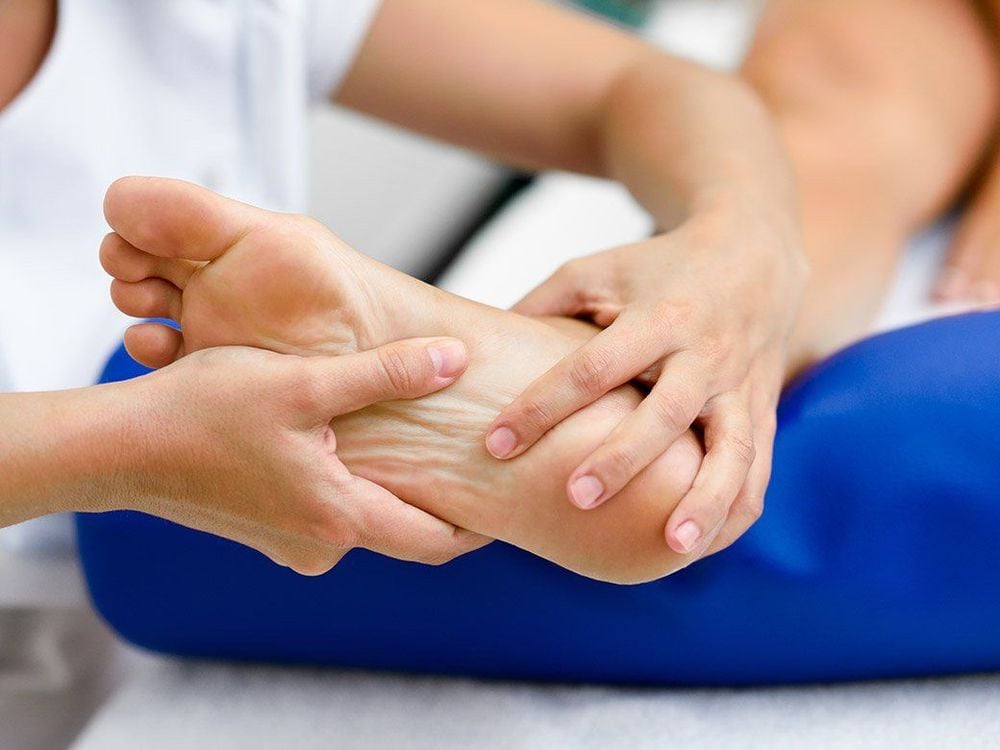
Đau đớn là một dấu hiệu của bong gân
4. Classification of sprains and strains
Both lesions are divided into 3 different degrees:
4.1 Sprains
1 : Mild sprain, in which the ligament is overstretched. There may be mild pain and bruising with soreness, but the use of the body part is not very difficult. Grade 2: There is a tear of some ligaments, the two joints are still firm but not loose, leading to moderate pain. Grade 3: The ligament is completely torn, resulting in severe pain, swelling, bruising, and inability to use the damaged area. If the sprain is severe, you may hear the click of a torn ligament.
4.2 Muscle tension
Grade 1: Mild muscle tension in which some muscle fibers are damaged. Grade 2: Moderate muscle tension with more extensive muscle damage. Grade 3: At worst, the muscle is completely broken. This type of muscle strain can take months to heal.
5. Diagnosing a sprain or strain in children
The doctor who examines your child will ask about the child's health history and how the injury occurred
In addition, your child will need to perform some diagnostic tests such as:
X-rays: clearly show the inside of tissues, bones, and organs. Magnetic resonance imaging (MRI): uses a combination of large magnets, radio frequencies, and a computer to create detailed images of organs and structures inside the body. Computed tomography: uses X-rays and a computer to create detailed images of the body. A CT scan shows details of bones, muscles, fat, and organs. A CT scan is more detailed than a general X-ray.
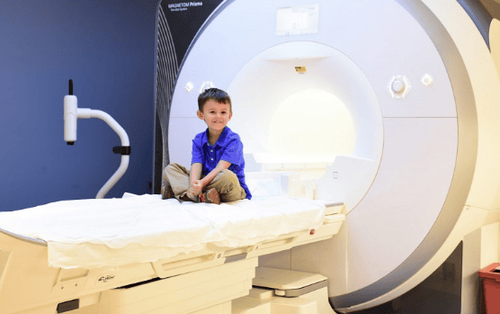
Chụp MRI giúp chẩn đoán tình trạng bong gân, căng cơ
6. Treating a sprain or strain
Treatment will depend on your child's symptoms, age, general health, and severity of damage. Some severe sprains may require surgical intervention, but not many.
Initial treatment for a sprain or strain according to the RICE principle means:
Rest: Rest the child and keep the injured part of the body still for at least 24-48 hours. If the injury is very painful, use splints, straps, or bandages to help immobilize the injured part. Ice: Cold compresses help reduce local inflammation and swelling. Do not put the ice cube directly on the injured area, but wrap the ice cube in a thin towel to protect the baby's skin. Do it continuously for 15-20 minutes each time, repeat every 2-3 hours, maintain for the first 24-48 hours. Compression (bandage): Using an elastic bandage wrapped around the injured area when not applying cold to help stabilize and reduce pain and discomfort. Be careful not to wrap too tightly as it will reduce blood circulation. Elevation: trying to keep the painful area higher than the child's heart will help reduce swelling. If the child is in too much pain, an anti-inflammatory pain reliever such as Ibuprofen can be used.
Applying the RICE method thoroughly in the first 24 - 48 hours after the injury will make the child much more comfortable and reduce the symptoms significantly. It usually takes about a week or two for pain and swelling to subside, or even longer with serious injuries. Then your child can slowly begin to return to normal activities. Ask the child to practice moving the joint around first and stop if it hurts.
When the child can move the joint without pain, it is recommended that the child do joint strengthening exercises with a physiotherapist. Don't be too impatient in your child's recovery because early activities can make the injury more severe or persistent, making it difficult to fully recover.
During recovery, call the doctor if your child doesn't seem to be getting better or if he or she has a fever, which could be a sign of an infection. Or there is a visible deformity in the injured area, severe pain that prevents the use of tendon-muscle-ligament.
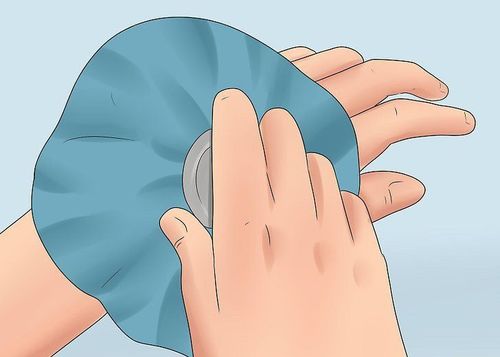
Chườm lạnh giúp cải thiện triệu chứng đau
7. Can a sprain or strain return?
The answer is that it can happen because the sprain weakens the ligaments, so the joint is more prone to twisting back. And once a muscle is stretched, it will be weaker than usual for a while, until it heals.
Ensuring that your child's sprain or strain heals properly will reduce the chance of re-injury.
8. How can a sprain or strain be prevented?
If your child is still a toddler, he or she needs constant adult supervision. For example, it is very easy for toddlers to climb into a place where they could fall and get injured. For children of all ages, check to make sure that play areas are safe.
When your child is active in sports or vigorous exercise, there should be a warm-up exercise before starting. Then take a few minutes to relax after finishing vigorous activity, it helps to improve the flexibility of joints and muscles, which can become stiff after exertion.
In the long term, regular exercise can help children avoid muscle strains and sprains by strengthening muscles, keeping joints supple, and improving balance and coordination.
If your child is just starting a new sport, let him start slowly and increase the intensity as he builds strength and endurance.
Also give your child a break from sports and exercise one or two days a week to allow their body to rest and recover.
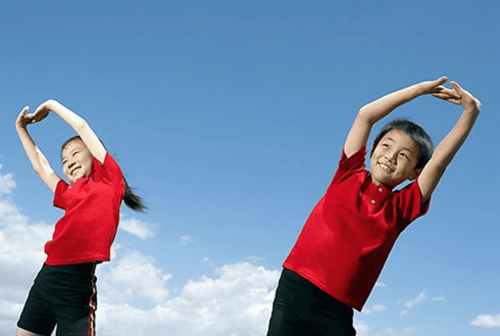
Duy trì thói quen tập thể dục cho trẻ
When your baby has symptoms of a sprain or strain, you should immediately take your child to a medical facility for early examination and treatment.
As a key area of Vinmec Health System, Pediatrics Department - Vinmec International General Hospital always brings satisfaction to customers and is highly appreciated by industry experts thanks to the following advantages:
gathers a team of leading doctors and doctors in Pediatrics: including leading experts, with high professional qualifications (professors, associate professors, doctorates, masters), experienced, having worked in different hospitals. big hospitals like Bach Mai, 108.. The doctors are all well-trained, professional, have a heart - reach, understand young psychology. In addition to domestic pediatric specialists, the Department of Pediatrics also has the participation of foreign experts (Japan, Singapore, Australia, USA) who are always pioneers in applying the latest and most effective treatment regimens. . Comprehensive services: In the field of Pediatrics, Vinmec provides a series of continuous medical examination and treatment services from Newborn to Pediatric and Vaccine,... according to international standards to help parents take care of their baby's health from birth to childhood. from birth to adulthood Specialized techniques: Vinmec has successfully deployed many specialized techniques to make the treatment of difficult diseases in Pediatrics more effective: neurosurgery - skull surgery, stem cell transplantation. blood in cancer treatment. Professional care: In addition to understanding children's psychology, Vinmec also pays special attention to the children's play space, helping them to have fun and get used to the hospital's environment, cooperate in treatment, improve the efficiency of medical treatment.
Please dial HOTLINE for more information or register for an appointment HERE. Download MyVinmec app to make appointments faster and to manage your bookings easily.
References: babycenter.com, cedars-sinai.org




